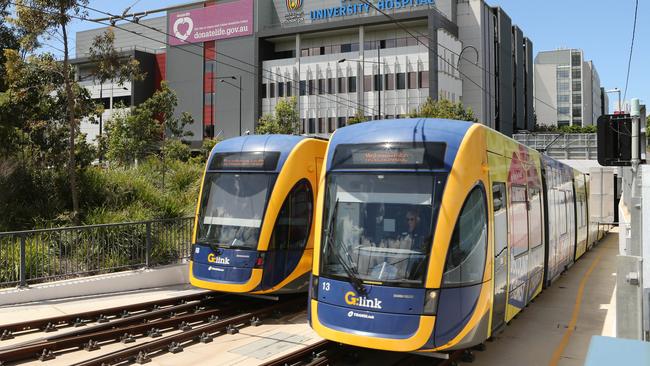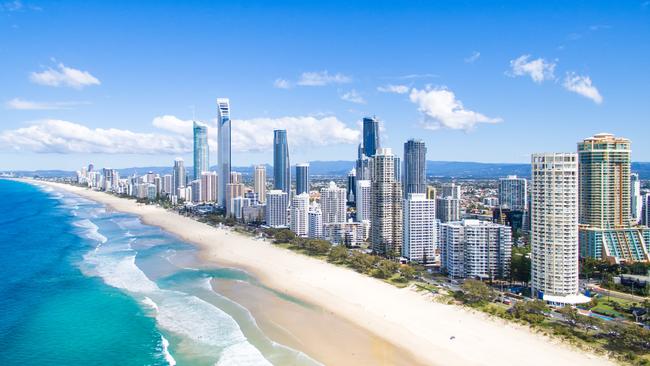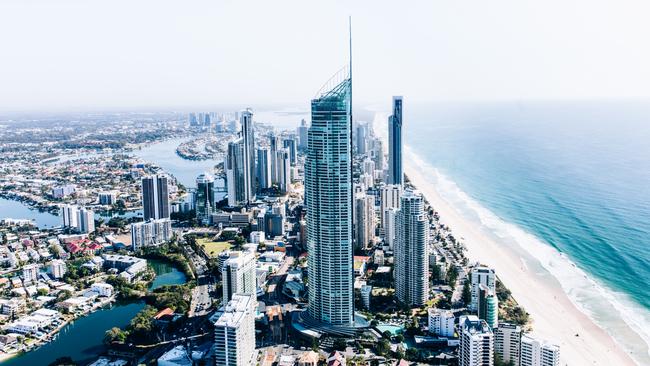Gold Coast light rail: Spending on trams and trains must be fast-tracked says leading researcher
A leading demographer says the Gold Coast must rapidly expand its light rail network and build heavy rail to the airport after new research revealed the city faces a major issue after COVID.
Gold Coast
Don't miss out on the headlines from Gold Coast. Followed categories will be added to My News.
THE Gold Coast must put its infrastructure spend on steroids to ensure the city copes with a post-COVID population boom.
New research from leading demographer Mark McCrindle shows the Gold Coast will be the first major Australia city to rebound from the economic turmoil of the coronavirus, but he says it needs to be ready for it.
He says building major transport projects such as the light rail extension and heavy rail to the airport in readiness for the population explosion was crucial.

HOW TO SOLVE COAST’S POPULATION GROWTH FEARS
“Australia has a habit of playing catch-up with infrastructure investment after the fact when it comes to population growth,” he said.
“The Gold Coast has the unique opportunity to go and get these pieces of critical infrastructure in place before the growth rebounds, which I anticipate will be between 2025 and 2027.
“This will give the Gold Coast a several-year head start to get this infrastructure in place.”
The city’s population was forecast to top 1.2 million within 20 years before COVID effectively halted migration in March.
Treasury figures released in early 2019 predicted the Coast would welcome 14,670 people annually for the next 25 years, up from an average of about 10,000.

Mr McCrindle’s latest research has focused on what the Gold Coast could look like five years from now and how the COVID crisis would reshape day-to-day life.
He said migration levels would drop in the short-term, before spiking dramatically.
“There will be impaired population growth trajectories and it will most likely slow for the next few years.
“But we will see an escalation of massive internal population shifts which will rebalance things and the Gold Coast will gain many of those people looking for both a sea-change or a treechange.

“The east coast cities have shown their vulnerability while the regions, including the Gold Coast, have shown their benefits and adaptability and nothing motivates people more than fear.
“On the Gold Coast they can get the lifestyle and feel safe.”
Mr McCrindle said the limitations put on the Gold Coast as a result of the pandemic-enforced border closures would force businesses to innovate and change so they could prosper in the “new normal”.
“Closed national and international borders are both unprecedented and devastating to the Gold Coast’s biggest industries — tourism, hospitality, events were all wacked.
“But I see some reasons for optimism and pivots which could take place, but what we have to recognise right now is that what we had pre-COVID will not be seen again.

“Things will not work the way they used to. It’s going to be a new reality, but it is in this circumstance that we can innovate.”
While Queensland’s borders are expected to open before Christmas, international travel is not tipped to resume until at least mid-2021.
By 2025, Mr McCrindle expected thousands of telecommuters to be living on the Gold Coast, working from home for companies based in capital cities.
Anticipating this growth, the Gold Coast City Council is already considering changes to the City Plan to make it easier for home-based businesses to gain approval and allow for more work from home workers.
The Gold Coast property market has already experienced a significant uptick in interest from NSW and Victorian residents.

It was revealed in August that real estate agents had been inundated with out-of-state residents snapping up property sight-unseen in a bid to escape the COVID-afflicted southern states.
While the property market is booming, the Gold Coast tourism sector remains mostly dormant.
Before the crisis it was worth $6 billion but the loss of lucrative overseas visitors and those from interstate has seen this fall by more than $4 billion in the past six months.
While visitor numbers are expected to rebound, the city’s valuable events industry will be dramatically different.
Mr McCrindle said ongoing social distancing measures would to force organisers to abandon existing business models.
“The Gold Coast's past was all about the events industry but this is going to change.
“Not all the events will be large in scale — most will have a virtual component.
“Smaller boutique gatherings will be the norm but the big ballrooms on the Gold Coast will still get a lot of use. However, expect a lot more sit-down events rather than people milling around buffets.
“This will mean a need for more waiters and support staff and that means more jobs.”
Originally published as Gold Coast light rail: Spending on trams and trains must be fast-tracked says leading researcher

